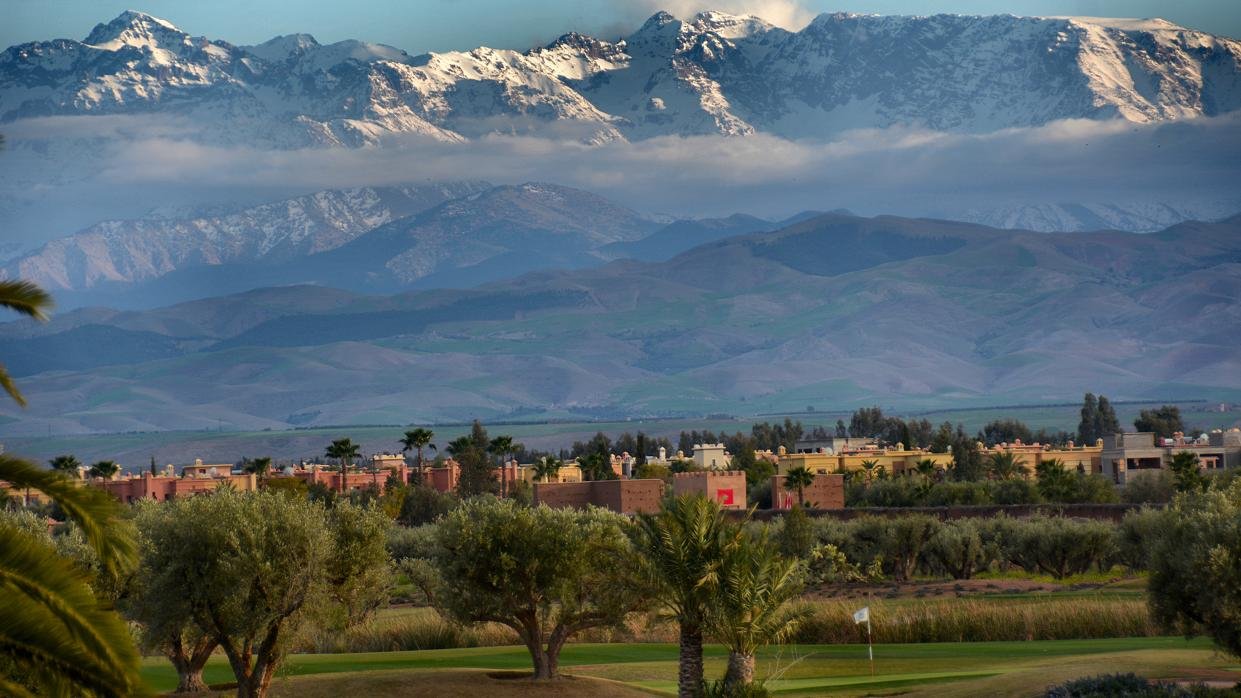The desert near Marrakech that few tourists know about
The Agafay desert, at the foot of the Atlas, is a Berber land where the plants that produce argan oil grow.
There are totally captivating place names. Marrakech is one of them. In the Berber language it means “Land of God”, although its inhabitants refer to it as “Al Hamra”, which in Arabic means “The Red One” and from which The Alhambra has derived, with such familiar Granada resonances.
A magical and mysterious place, it is, along with Fez, Meknes and Rabat, one of the four imperial cities of Morocco. Crossing of caravans that came and went from the Sahel and the desert to the Atlantic and the Mediterranean.
Red and Andalusian city of arid origin, but which the Almoravids were determined to turn into their capital and therefore searched for water in its subsoil. This is how the many fountains that Marrakech has today were born and that have turned it into an authentic oasis at the foot of the Atlas.
But if we continue towards that mountain range, we will leave the bustle of the souks to enter the Kik plateau, on the way to Agafay. This desert is located about 40 km. SW of Marrakech, although it is largely unknown for mass tourism. You must pass through it to trek through the High Atlas, a backdrop with snow-capped peaks at more than 4,000 meters. The wooded and green slopes of Asni go from snowy white to the ocher of the limestone and again the green of the olive groves and palm groves.

Although it is known as a desert, the Agafay desert (some call it Marrakchi) is not the typical place of dunes, like the nearby Sahara, it is rather a barren terrain, full of pebbles and little vegetation. From the hustle and bustle of the Djemaa el Fna square we went in one hour to the tranquility of the Kik Plateau, which we reached by crossing the Asni valley. Not so long ago there was more than one town around here, but its inhabitants had to leave due to lack of water. Only a few shepherds remain with their flocks of goats.
For those who find the silence only broken by the sound of the breeze boring (I’m not one of those) there is the possibility of going up and down the hills (not dunes) on fast quads, approaching the shepherds in 4X4 vehicles, and even practice water sports in the Lalla Takerkoust reservoir, built at the end of the 70s of the last century to alleviate the migratory exodus.
An intermediate option is dromedary rides to the jaima camps, where you can spend a fairy-tale night under the stars.
Land of Berbers, whom the Romans unfairly called “barbarians”, an adaptation of the word “barbr”, although they prefer to call themselves “imazighen” which means “free men”. We can see them in Ouirgane. They have adapted to receive travelers. If it is on a Thursday, be sure to visit their weekly market.
In Tahennaoute it is very interesting to visit the Argan Oil Women’s Cooperative, a factory where only women work who are dedicated to manually extracting the oil from the almonds of this plant endemic to the area.


0 Comment